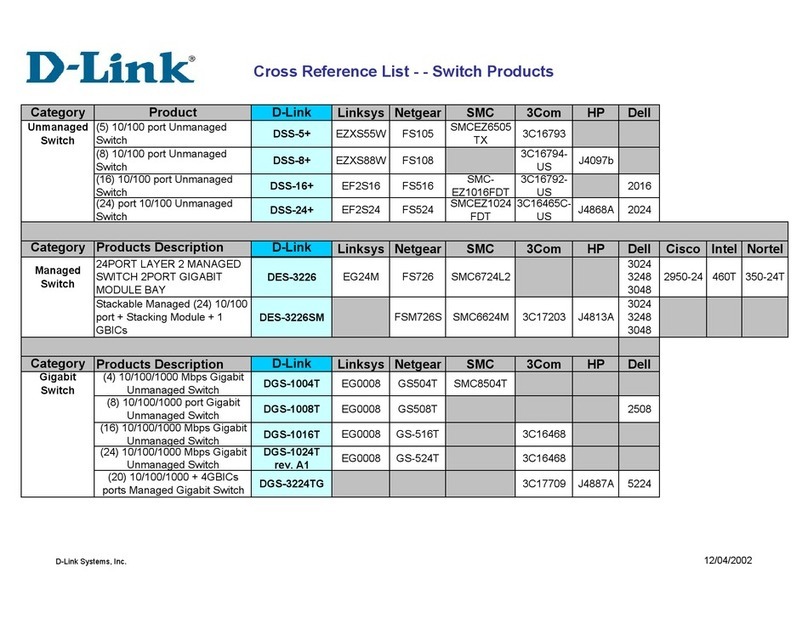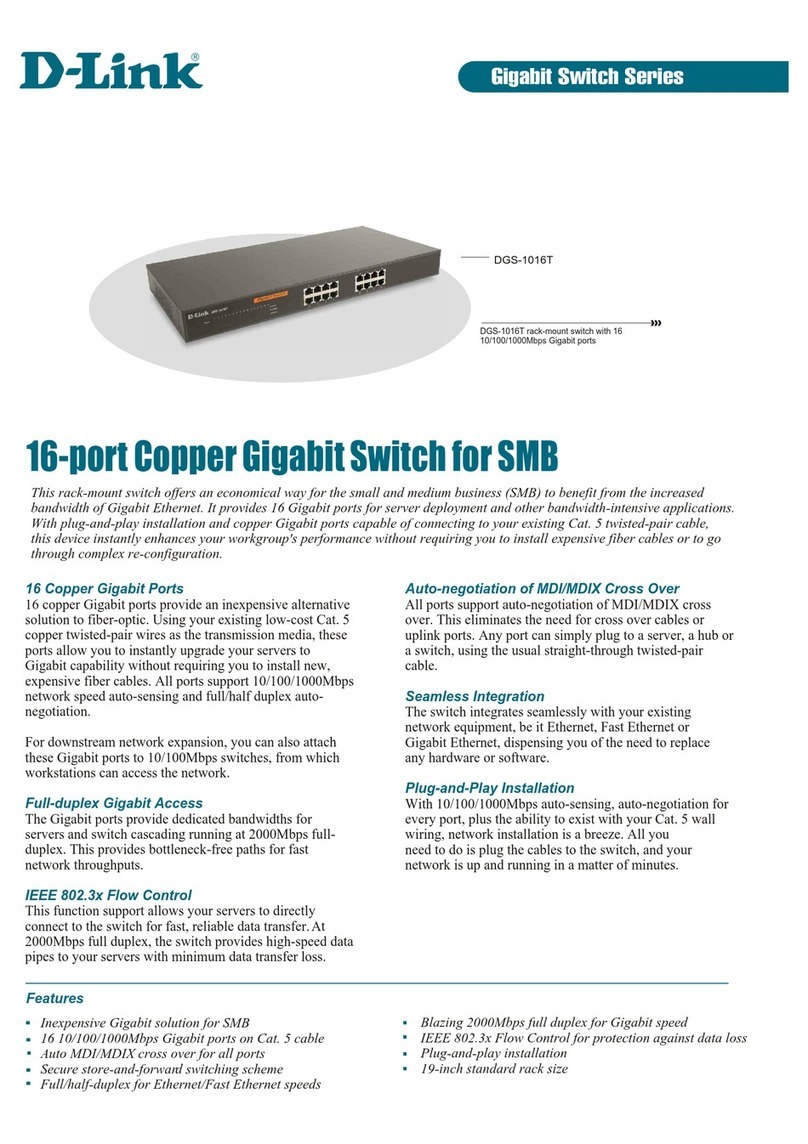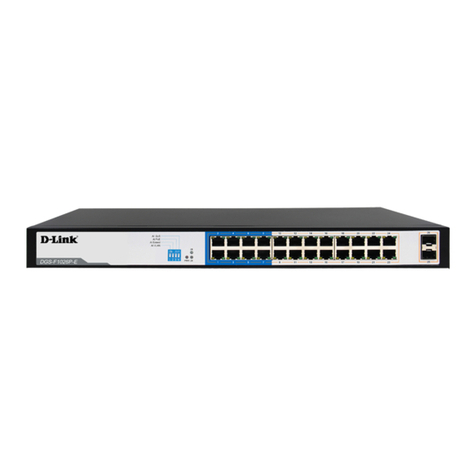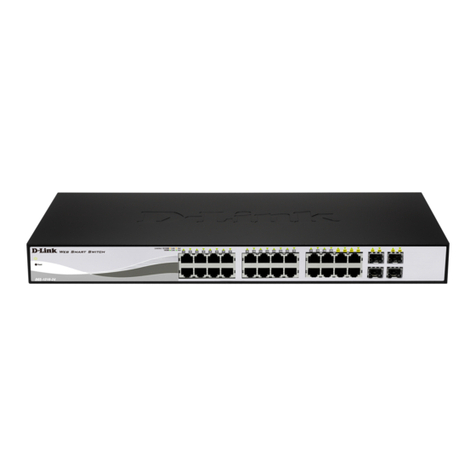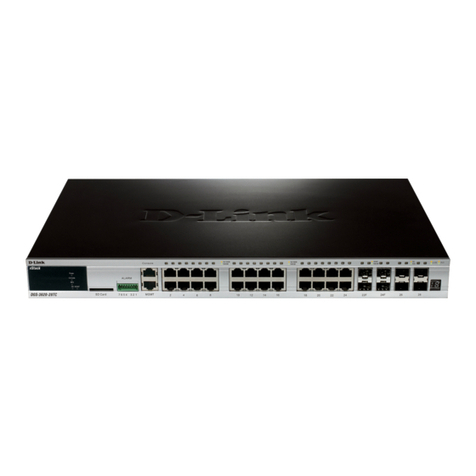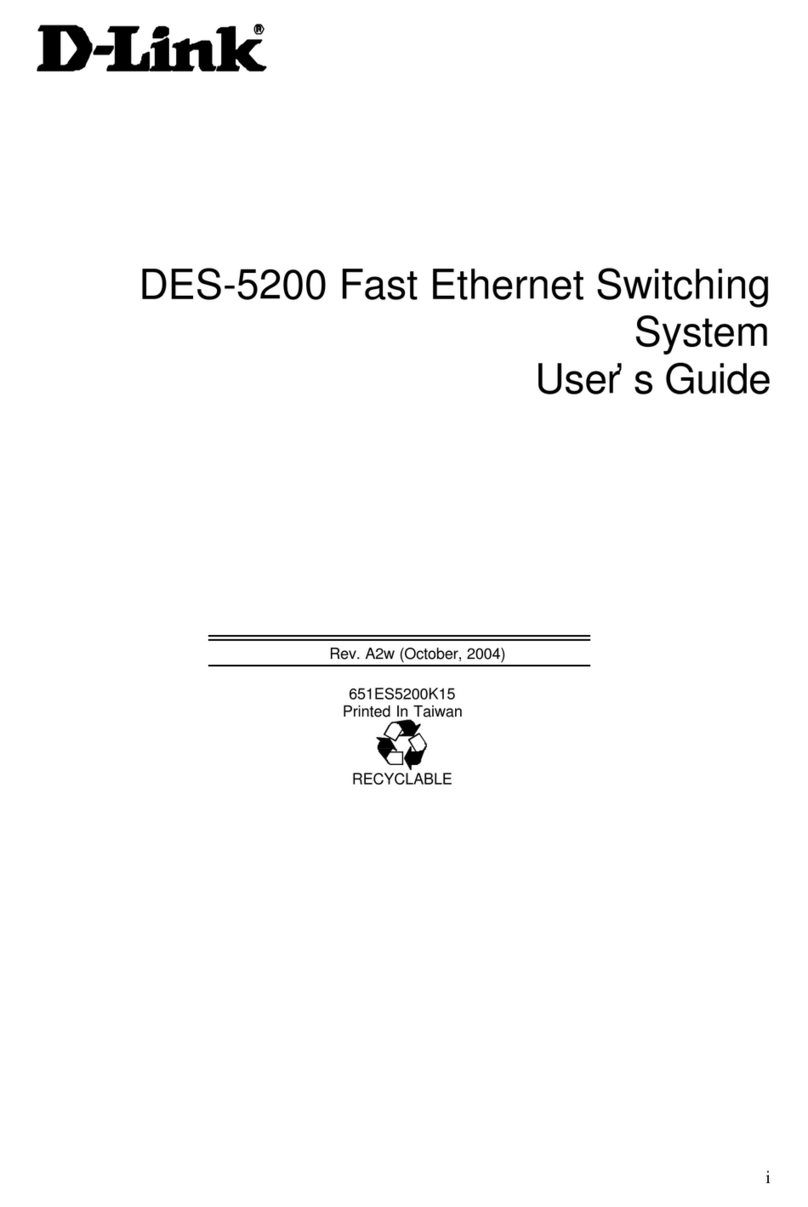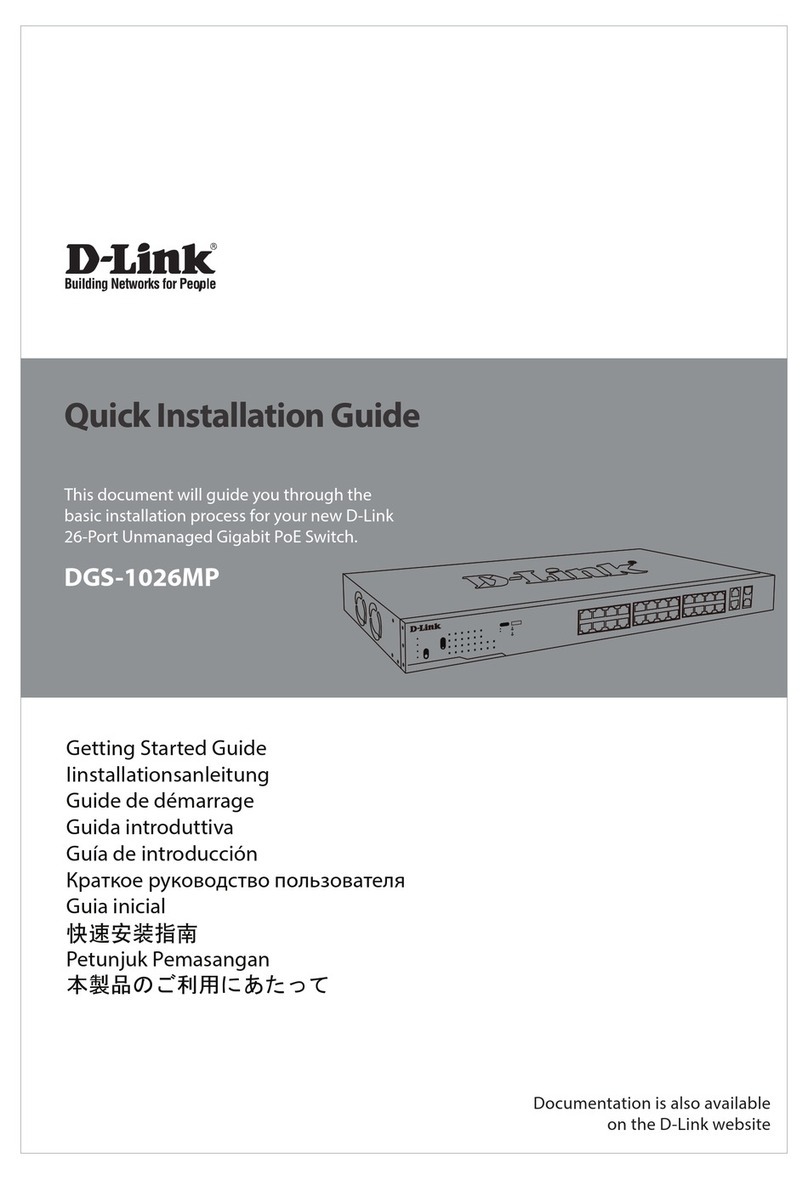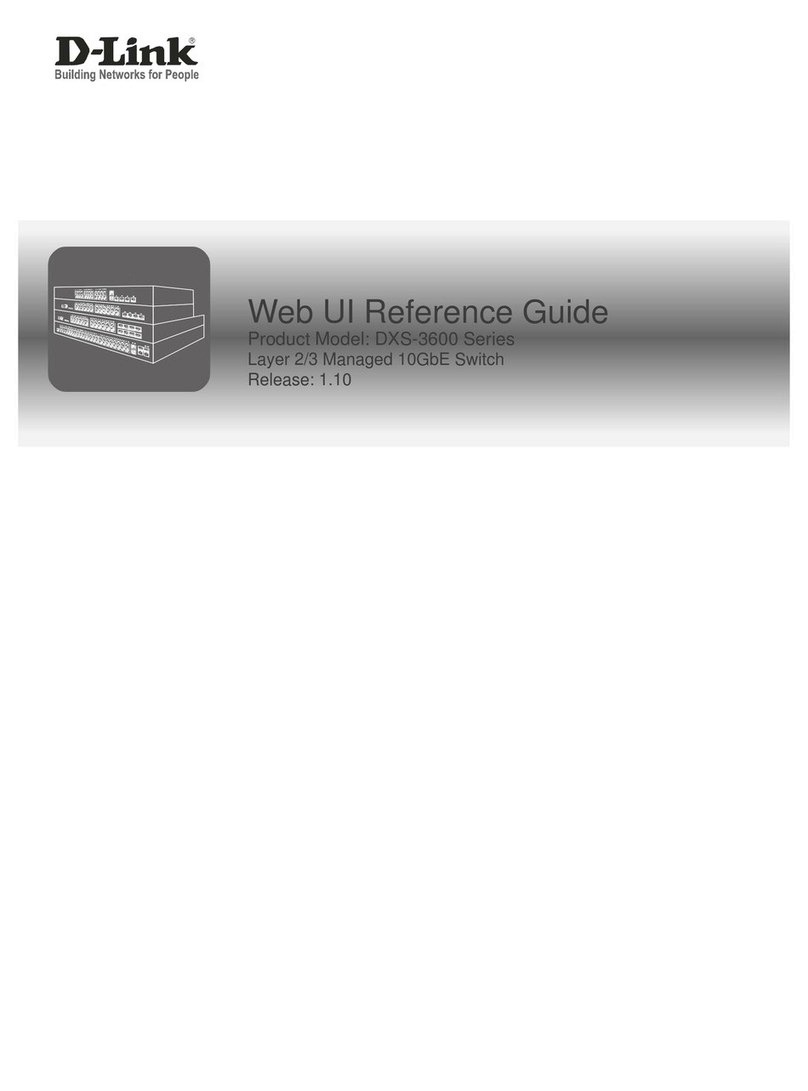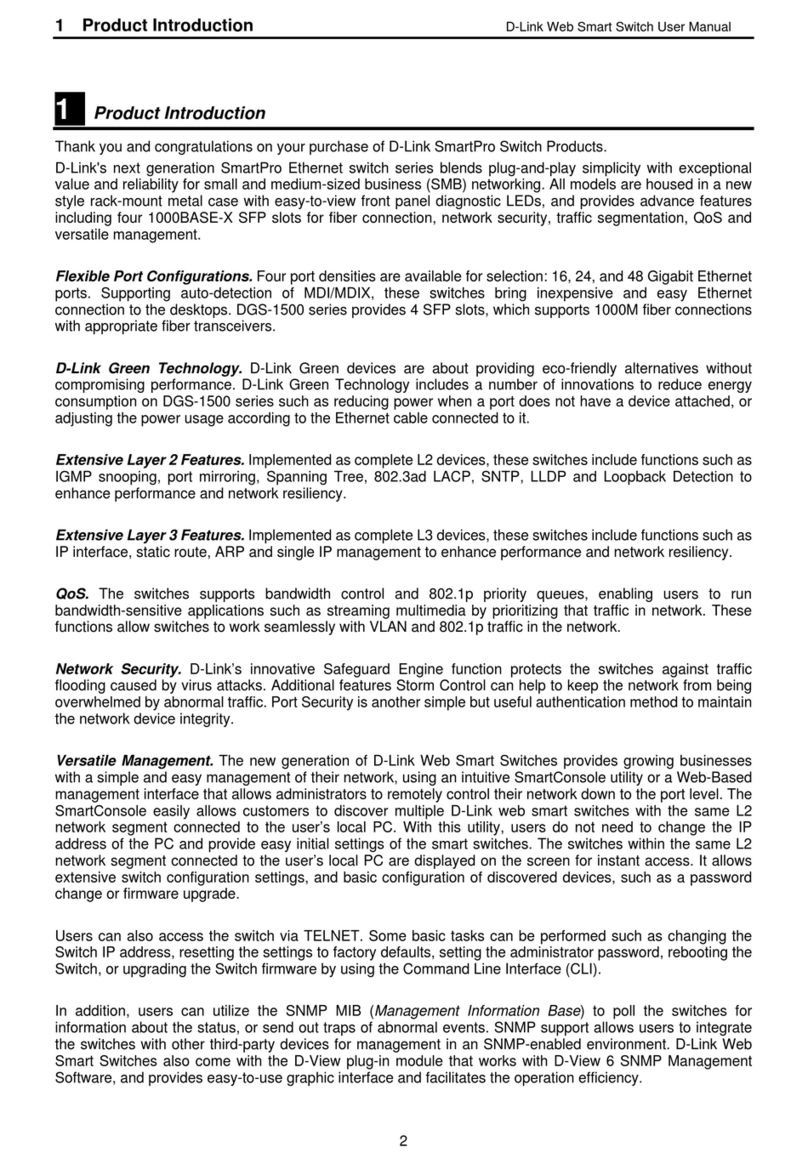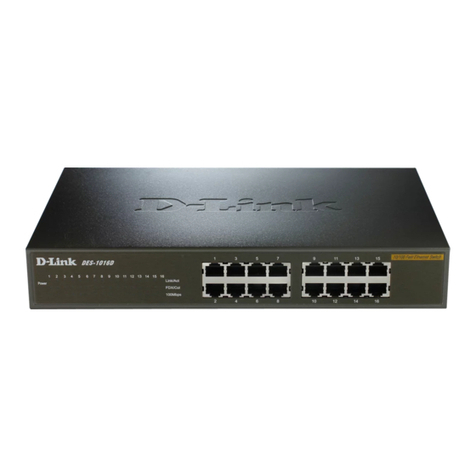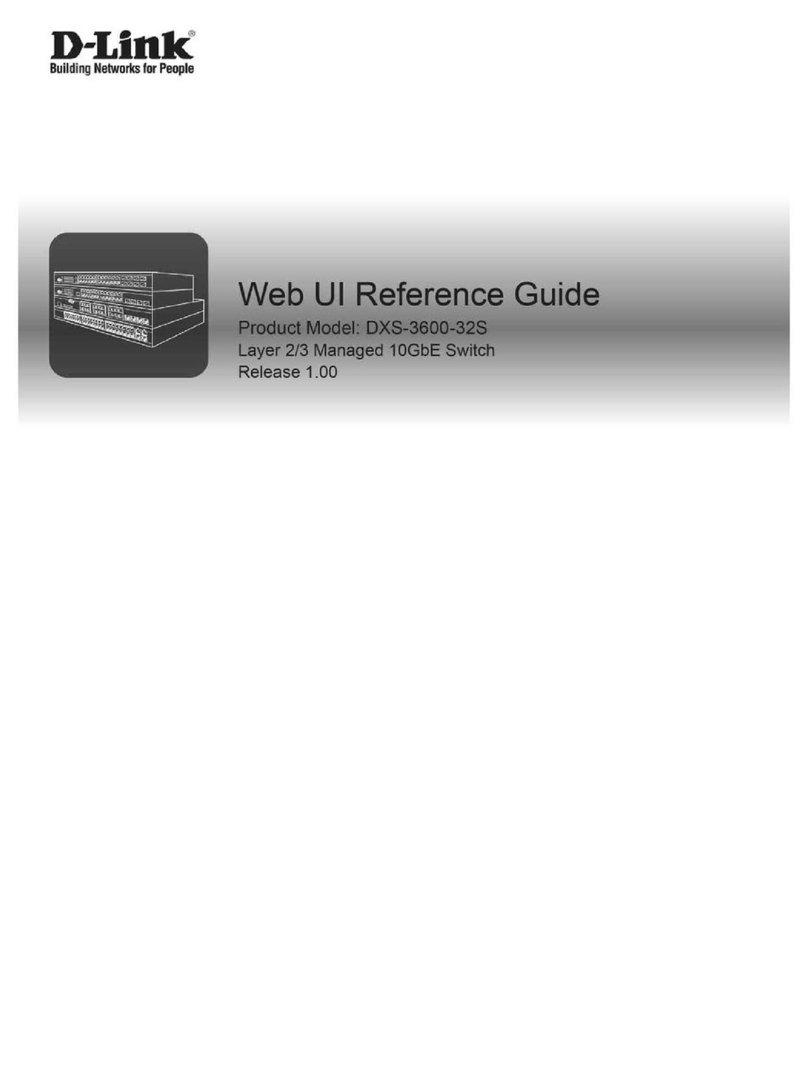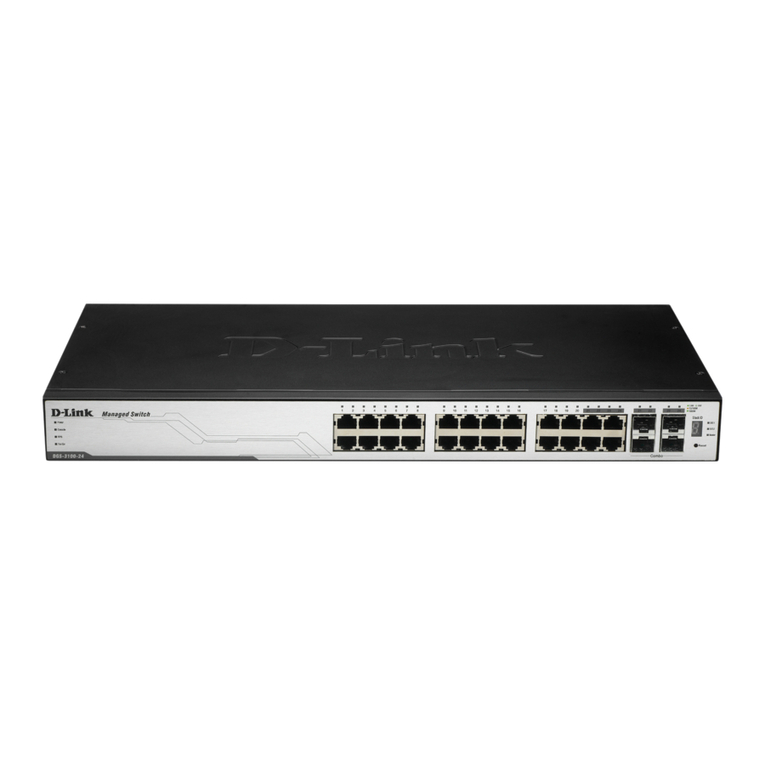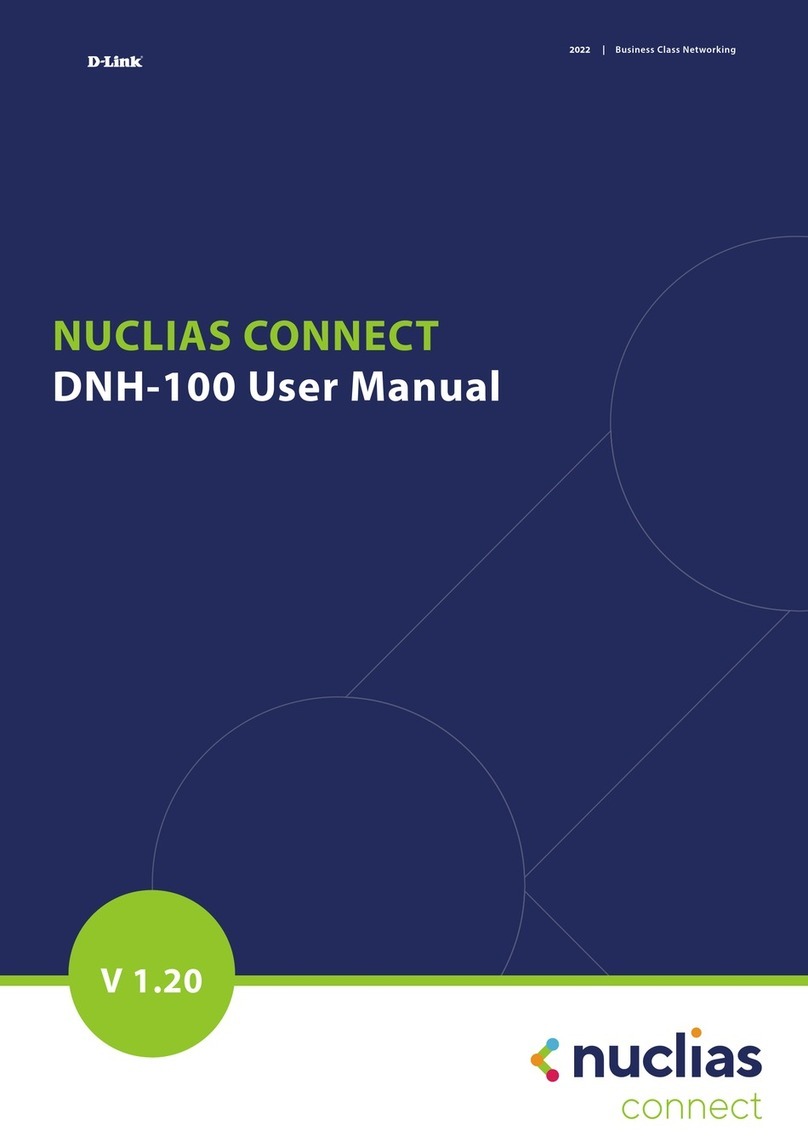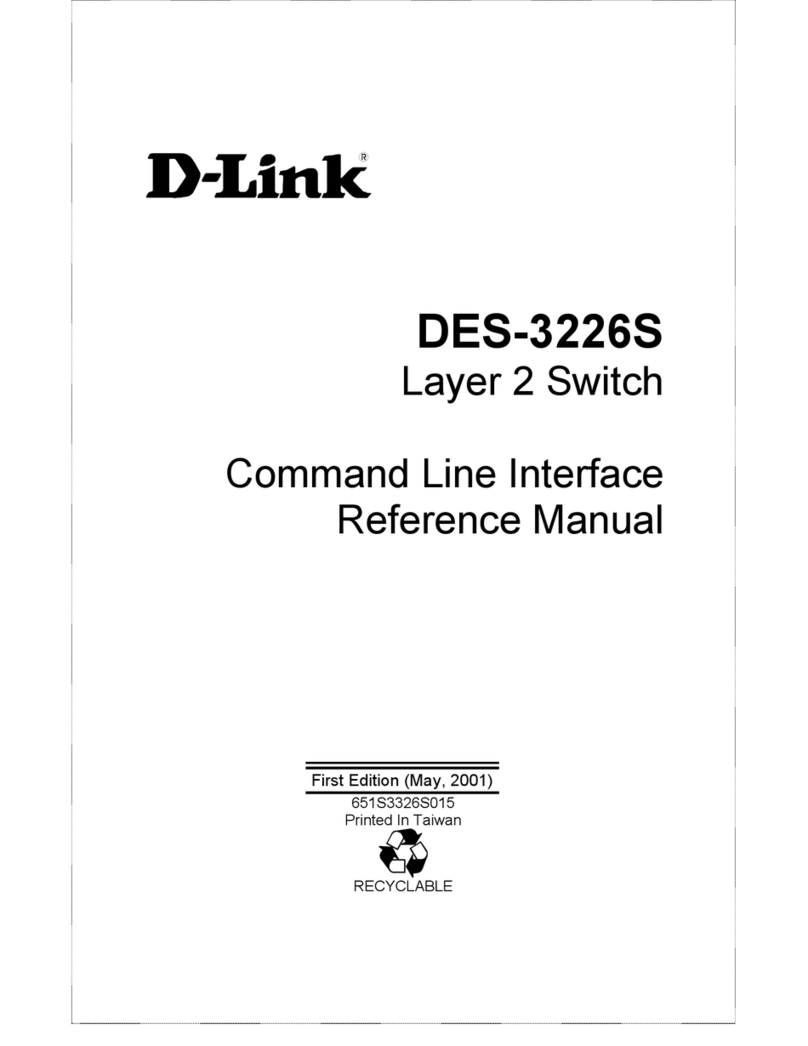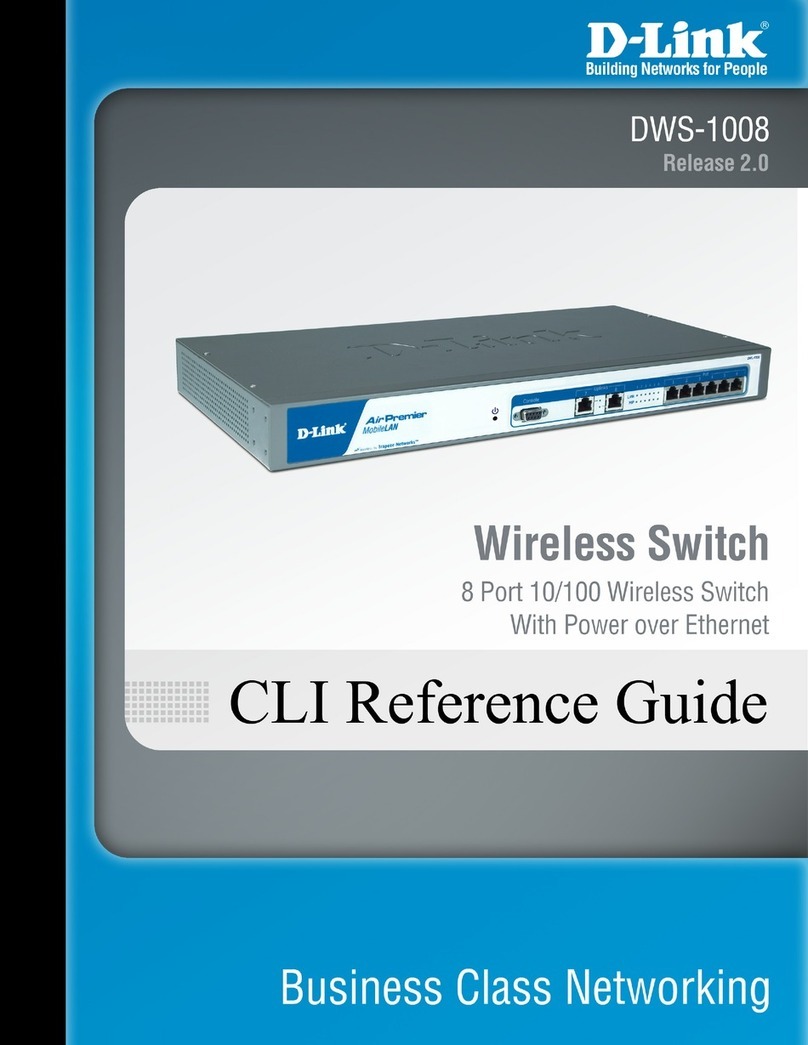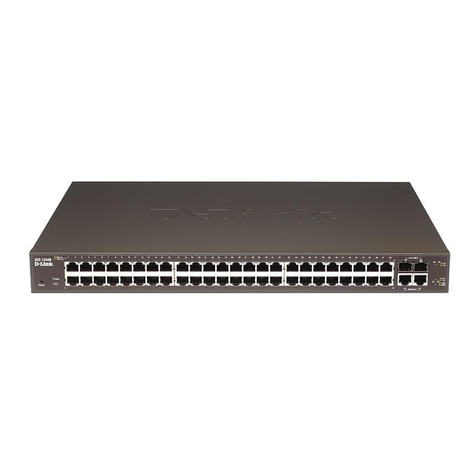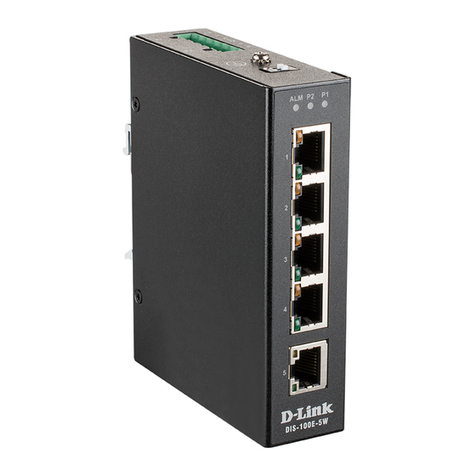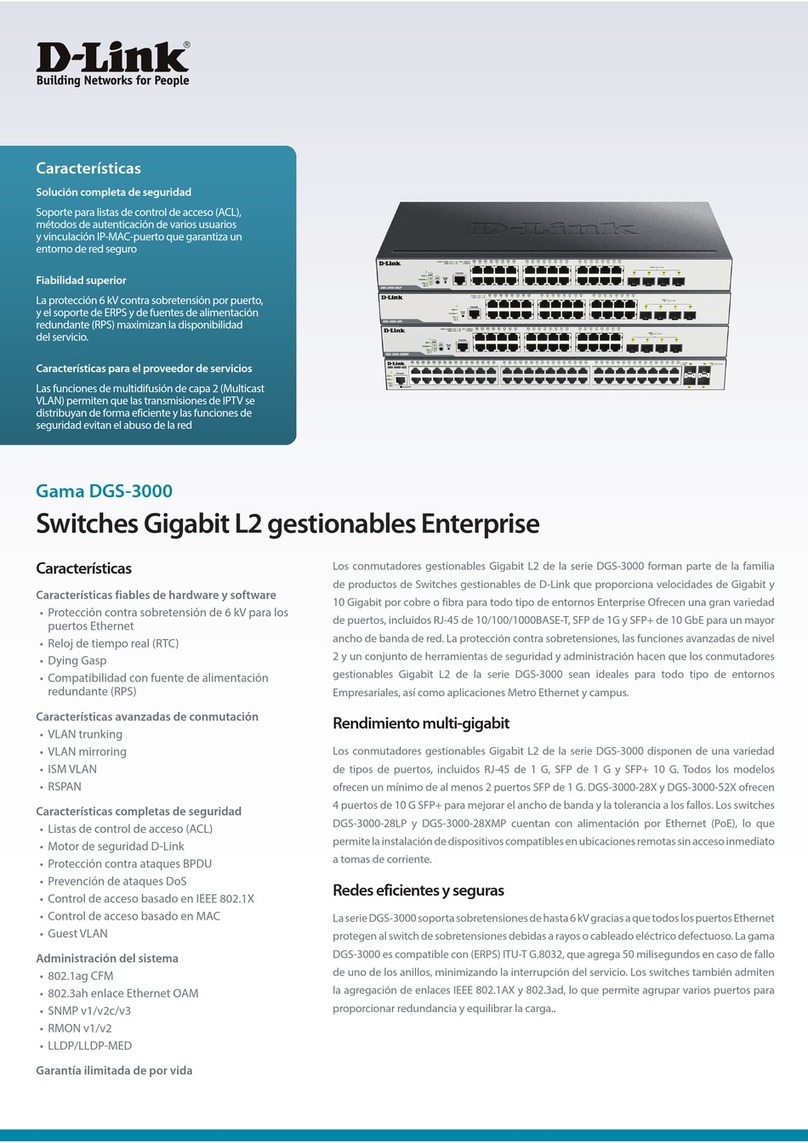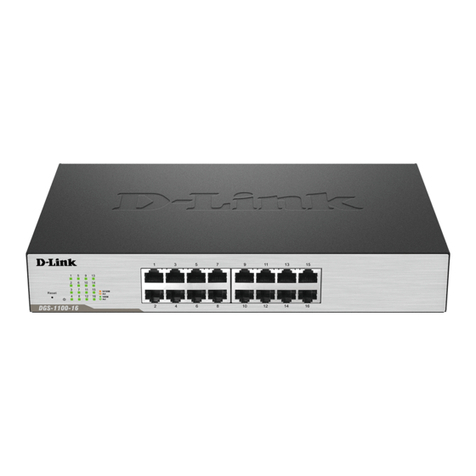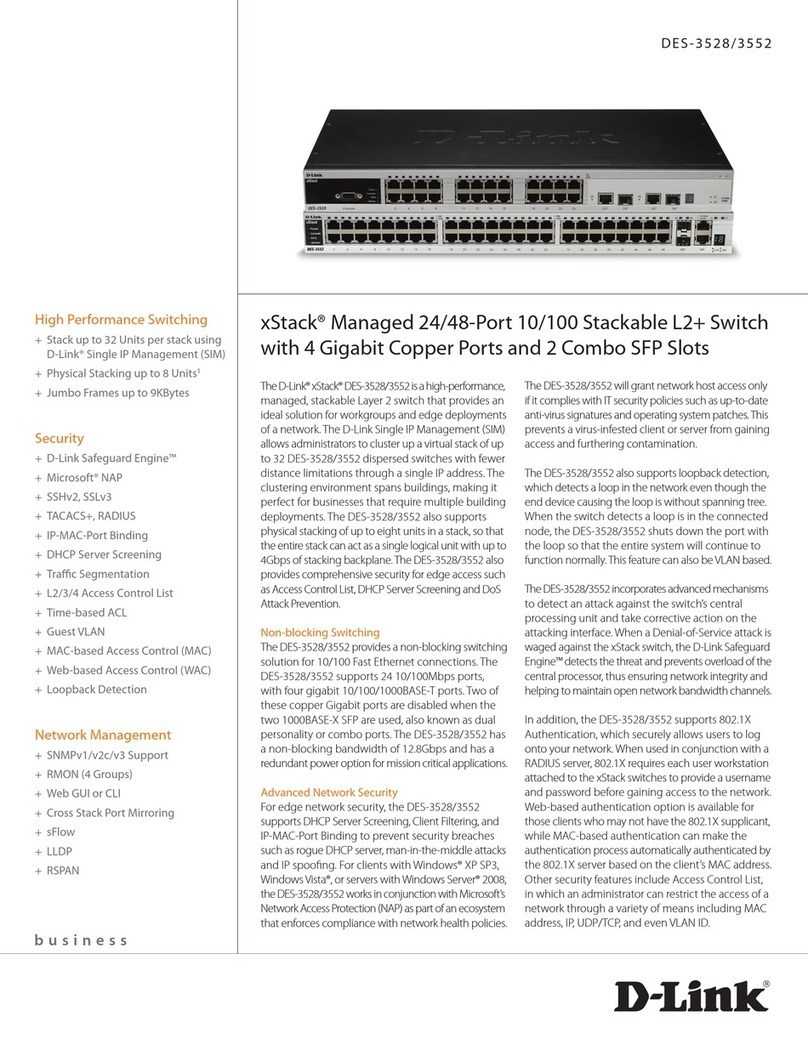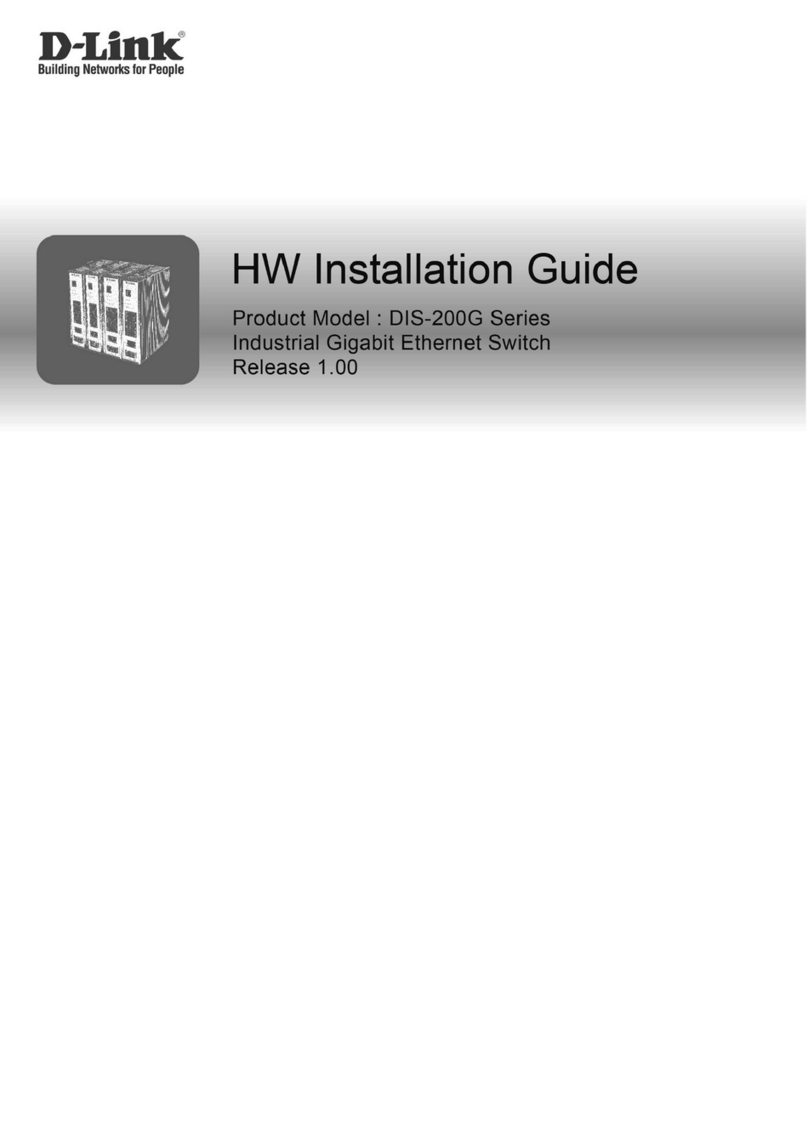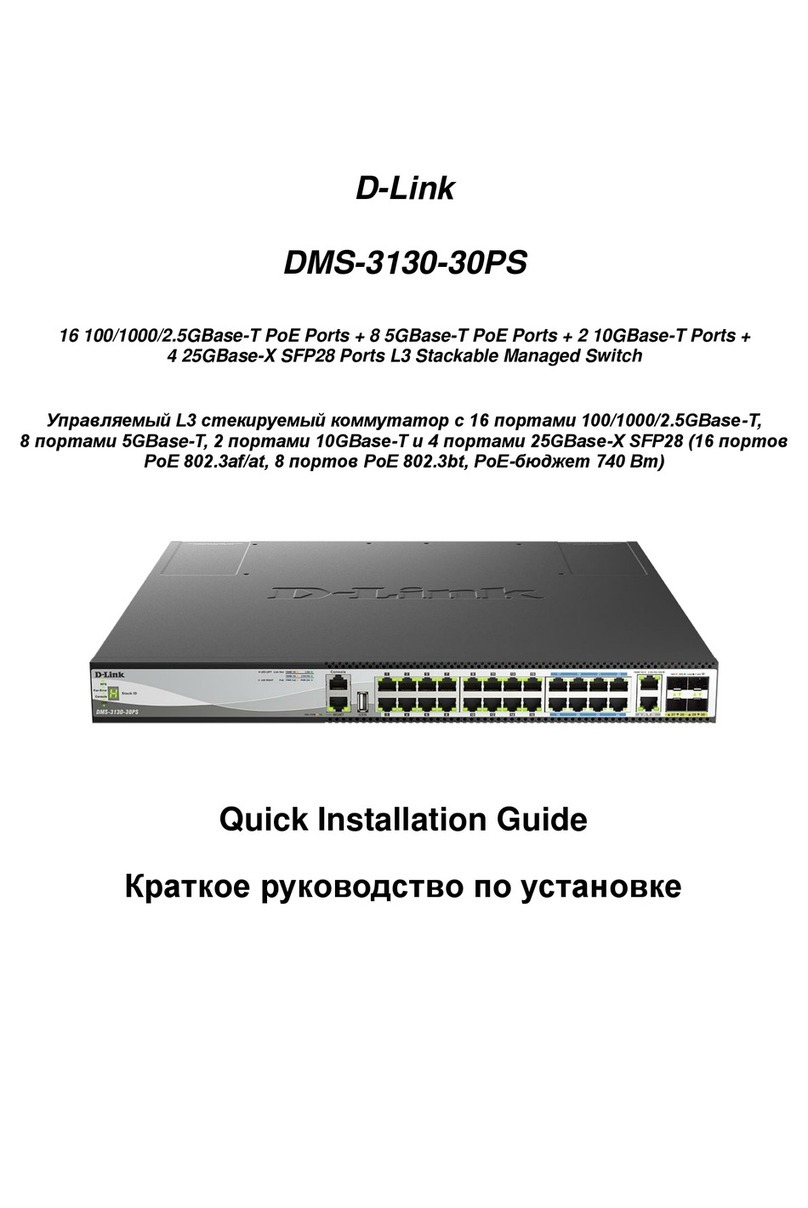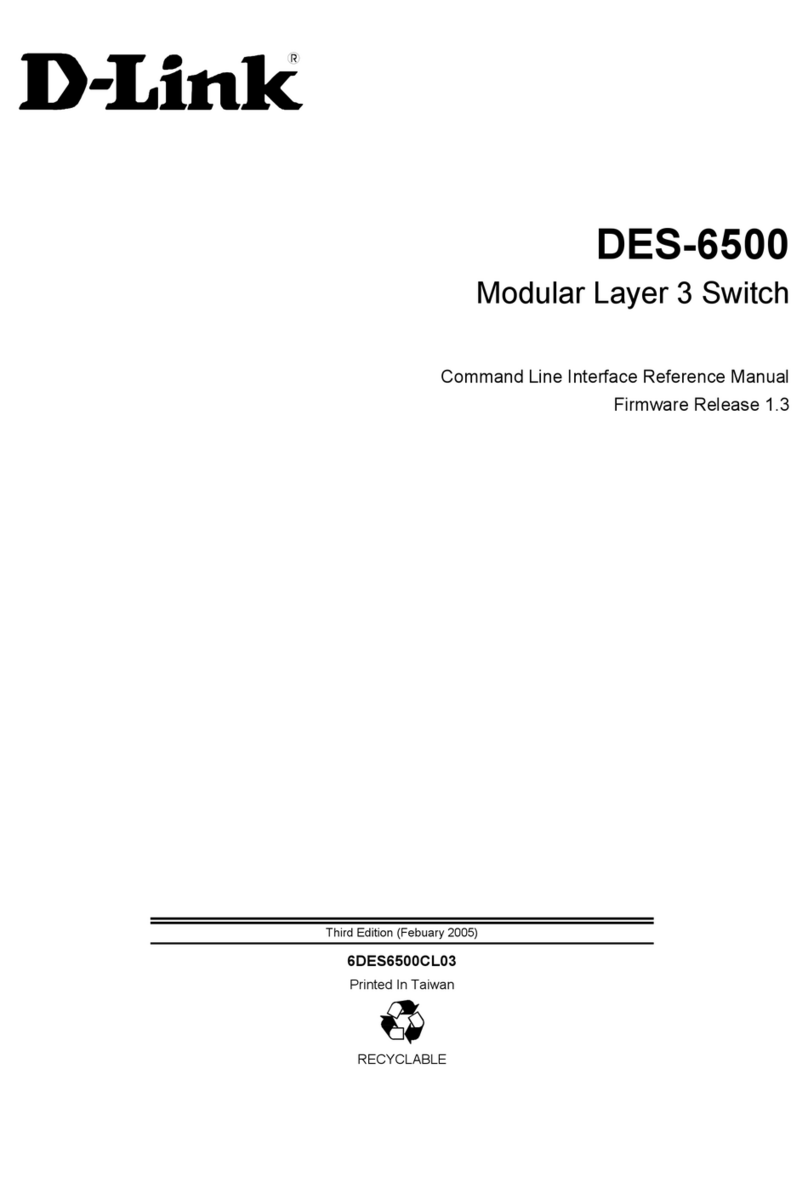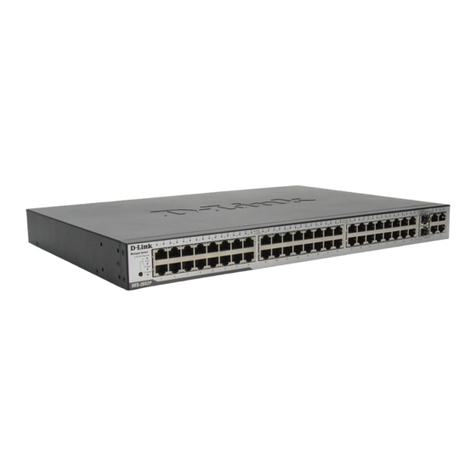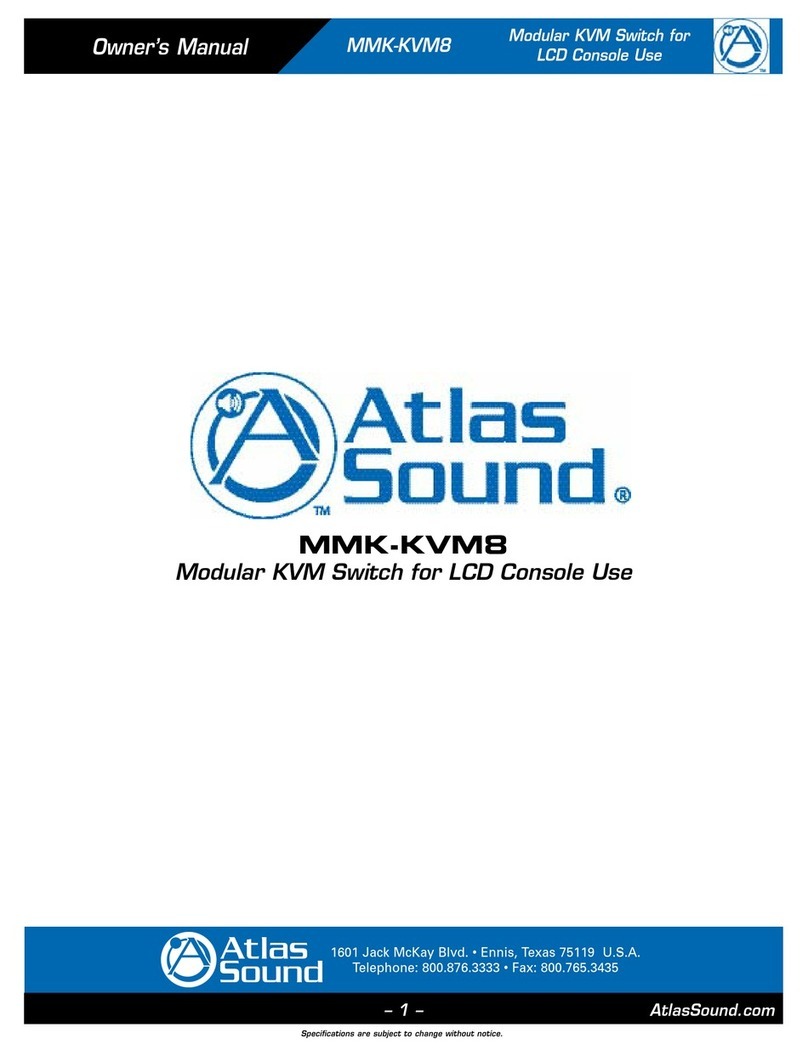
DXS-3227, DXS-3227P, DXS-3250 and DXS-3250E EWS User Guide
Page 8
DXS-3227, DXS-3227P, DXS-3250 and DXS-3250E User
Guide Overview
This section provides an overview to the D-Link Web System Interface User Guide. The D-Link Web System Inter-
face User Guide provides the following sections:
•Section 1, Device Description — Provides a system description including the hardware components.
•Section 2, Mounting Device — Provides step-by-step instructions for installing the device.
•Section 3, Initial Configuration — Provides step-by-step instructions for the initial device configuration.
•Section 4, Getting Started — Provides information about using the EWS, including The D-Link Embedded
Web Interface interface, management, and information buttons, as well as information about adding, modify-
ing, and deleting device information.
•Section 5, Managing Device Information — Provides information about opening the device zoom view,
defining general system information, and enabling Jumbo frames.
•Section 6, Managing Power over Ethernet Devices — Provides information about configuring PoE.
•Section 7, Stacking — Provides information about stacking.
•Section 8, Configuring Device Security — Provides information about configuring device security for man-
agement security, traffic control, and network security.
•Section 9, Configuring Ports — Provides information about configuring ports.
•Section 10, Aggregating Ports — Provides information about configuring Link Aggregated Groups and
LACP.
•Section 11, Configuring VLANs — Provides information about configuring and managing VLANs, including
information about GARP and GVRP, and defining VLAN groups.
•Section 12, IP Routing — Provides information for managing IP routing.
•Section 13, Configuring IP Information — Provides information about defining device IP addresses, ARP,
and Domain Name Servers.
•Section 14, Defining the Forwarding Database — Provides information about configuring and managing
both static and dynamic MAC addresses.
•Section 15, Configuring Spanning Tree — Provides information about configuring Spanning Tree Protocol
and the Rapid Spanning Tree Protocol.
•Section 16, Configuring Multicast Forwarding — Provides information about Multicast Forwarding.
•Section 17, Configuring SNMP — Provides information about defining SNMP v1,v2c, and v3 management,
including SNMP filters and notifications.
•Section 18, Configuring Quality of Service — Provides information about configuring Quality of Service on
the device.
•Section 19, Configuring LLDP — Provides information about configuring LLDP.
•Section 20, Managing System Files — Provides information about downloading, uploading, and copying
system files.
•Section 21, Managing System Logs — Provides information about enabling and defining system logs.
•Section 22, Managing Device Diagnostics — Provides information about configuring port mirroring, testing
copper and fiber cables, and viewing device health information.
•Section 23, Configuring System Time — Provides information about configuring system time, including
Daylight Savings Time parameters and Simple Network Time Protocol (SNTP) parameters.
•Section 24, Viewing Statistics — Provides information about viewing device statistics, including RMON sta-
tistics, device history events, and port and LAG utilization statistics.
•Appendix A, Device Specifications and Features — Provides device specifications and features.
•Appendix B, Troubleshooting — Provides basic troubleshooting for installing the device.
•Appendix C, Technical Support — Provide information receiving technical Support
